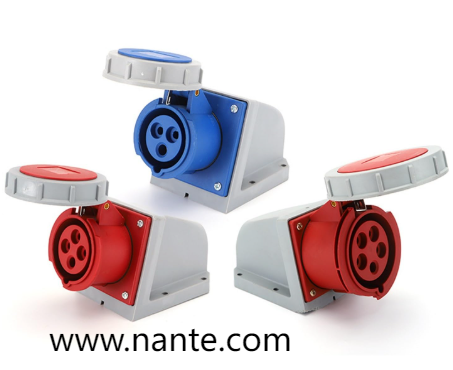As outdoor spaces see heavier use and weather patterns draw more attention in the news, owners and facility teams are wise to include an Outdoor Socket Box in routine upkeep plans. These enclosures take a lot of abuse from sun wind rain and accidental knocks, so a modest maintenance program keeps them functional and safe year round. Thoughtful care reduces service calls and helps protect connected equipment during storms or seasonal shifts.
Start with a seasonal inspection schedule that matches local climate cycles. After heavy storms or windy periods do a quick visual check for cracked lids displaced glands and loose fasteners. Look inside only after isolating supply and allow any accumulated moisture to evaporate before powering tests. Gaskets and seals deserve special attention because they are the first line of defense; if a seal is brittle or flattened replace it promptly so water and dust cannot reach terminals.
Cleanliness matters more than people expect. Dirt grit and plant debris accumulate at edges and in drainage channels, undermining seals and trapping moisture. Use a soft brush and a gentle spray to clean crevices then dry surfaces with a lint free cloth. Avoid solvent cleaners that can weaken plastics and gaskets; instead choose products recommended for electrical enclosures or plain water with mild detergent when grease is present. After cleaning, recheck gland compression around cables so strains on terminations remain controlled.
Tight electrical connections prevent heat buildup and loss of contact. Periodic torque checks on terminal screws catch loosened clamps before they create hotspots. When teams perform torque work follow manufacturer guidance for values and sequence; document adjustments in a service log so future technicians know what was done. Infrared scans during a powered test are a useful diagnostic because they show warm spots that warrant immediate follow up even if the box looks fine externally.
Protective devices are crucial. Confirm overcurrent modules and residual current devices remain responsive by exercising their test buttons according to supplier guidance. If the node includes surge suppression verify visual indicators and replace modules that show a spent condition; a device that has absorbed a spike should not remain in service without replacement. Also check any built in monitoring sensors for proper reporting so remote alerts reflect real status and do not lull staff into false confidence.
Mechanical fixings and mounting points often receive less attention than electrical parts but their failure has practical consequences. Check anchor bolts and mounting brackets for corrosion or loosening. In flood prone locations lifting the enclosure a little higher or adding a protective skirt helps prevent splash and silt from undermining seals. In high foot traffic areas consider protective guards that reduce the chance of impact from moving equipment while preserving ventilation.
Pest ingress is an underrated risk. Small animals insects and nests find small gaps attractive and once inside they create shorts or chewing damage. Inspect cable entries and block unused conduits with approved plugs. Retrofit fine mesh at vents if insects are common but ensure any added screens do not block pressure equalization features that prevent condensation. Replace any chewed cable sections and reterminate with correct ferrules and glands.
Seasonal temperature swings demand thought. In cold climates condensation forms inside when warm interiors cool rapidly. Pressure equalization vents prevent vacuum driven moisture draw so do not seal vents without addressing the risk of trapped humidity. In hot sunny sites reflect heat away from the enclosure with light colored finishes or small shade canopies to lower internal temp and extend life of insulating materials and surge modules.
Keep a compact spare kit nearby. A small box with common gland sizes spare seals terminal blocks and a set of approved fasteners means crews can restore protection quickly after a weather event or minor damage. Store a labeled replacement gasket sized to the enclosure and a prewired spare terminal block so service teams can swap modules and minimize downtime without improvisation.
Document work and keep a short log inside the panel or in a shared digital file. Note gasket replacements torque checks date of surge module swaps and any water ingress events. That history helps spot recurring issues and supports warranty or insurance conversations if a serious failure occurs. Train at least two people on safe isolation procedures and simple diagnostics so cover removal and basic checks proceed without delay when a problem appears.
Security and access control complete a maintenance plan. Locking covers and tamper switches deter unauthorized access and provide an alert when the unit is opened. For community installations post simple isolation steps and emergency contact details near the enclosure so helpers and volunteers know how to act without guessing. Clear labeling of circuits and a tidy wiring diagram glued inside the door speeds repairs and reduces the chance of accidental disconnection.
Finally, choose enclosures and accessories that match site conditions and that come with clear installation notes and spare part options. Durable construction combined with replaceable wear items reduces total lifecycle cost and helps planners keep inventories modest. For teams that want to align maintenance routines with practical products and spare lists, review configurable outdoor node options and accessory kits that support seasonal readiness.
For technical details, mounting options, and spare part listings that help you set up a maintenance friendly Outdoor Socket Box deployment, see product information at www.nante.com/product/ . The site includes accessory kits gasket options and installation notes to help you match an enclosure to local exposure and service plans. With modest planning and the right components your outdoor power points stay functional across seasons and respond more predictably when weather disrupts normal conditions.

